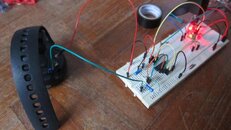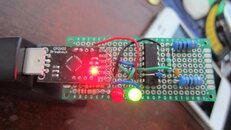One thing to keep in mind with this gadget is that it uses a lot of battery power. Use it carefully, doing downloads of dive data possibly only after each multiple-dive trip. There are several dive computers with this problem, even Suunto. I am not shure why, because the Puck circuit above appears to have an input impedance of soime 100 kohm. However, this is only the static resistant impedance and some of the current can possibly go through the USB microboard, not visible under static conditions.
Consider the software package "Subsurface", an open source program that interacts perfectly with the Puck line of computers (and many others) and that runs on Linux, Mac as well as Windows. In my personal opinion it is great. Check it on the Web.
Kind regards,
willemf
Hello to all, my first post and a question: why do you think this dongle sucks Puck's battery? It has it's own power source (from USB) and CMOS inputs on NAND gates have very high impedance...the only common thing for them is the ground, but I hardly doubt that there is some unwanted ground return path for signal that would somehow "short-circuit" Puck with USB to serial dongle.
Yes, doing too many PC syncs could drain Puck's battery a bit faster, but I believe it would be more because of what the whole syncing procedure does to the Puck and not because this circuit might be sucking it up.
On mine, when the syncing is in progress, I hear a faint buzzing sound, as if the buzzer in the Puck is working in sync with the data going in and out...it's like I'm listening to a modem...
So, if something is gonna eat my battery, it would be this I presume...don't know if it's supposed to work that way...can you guys check it out with your Puck's while they are syncing?
Cheers, Andrea
---------- Post added March 20th, 2014 at 11:33 AM ----------
I think that is the answer. BAT42 is a Schottky diode unlike 1N4148
Yep, I used a Schottky diode as well, but it was what I had at hand, BAT43.
If somebody's trying to use regular silicon, give it up - Schottkys have much lower voltage barrier of around 0.2V while normal silicon diodes (PN junction actually) have 0.6-0.7V voltage barrier. In low voltage application like this, 0.5V difference might mean a difference between the signal detected correctly and not detected at all.
So, as long as you use any low power schottky diode, like BAT42/43/... you should be fine.
Cheers, Andrea





